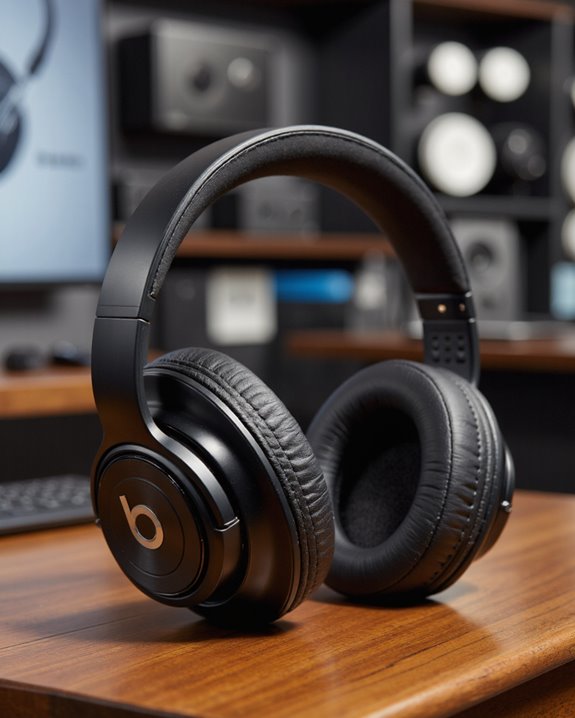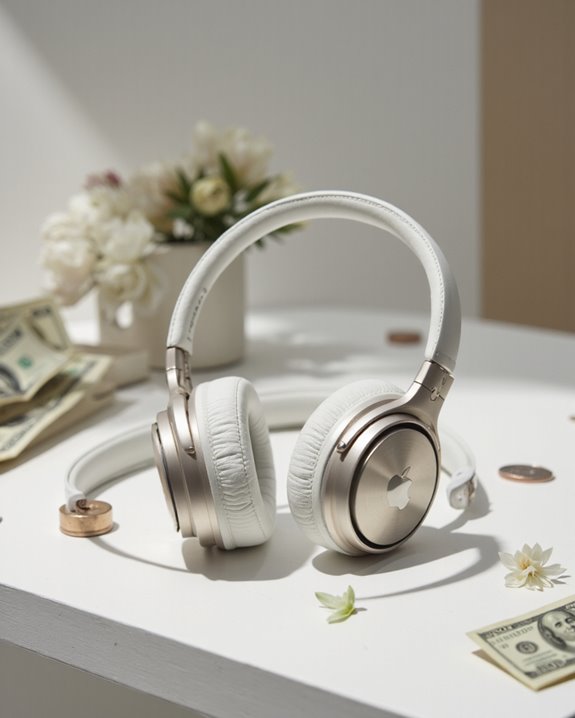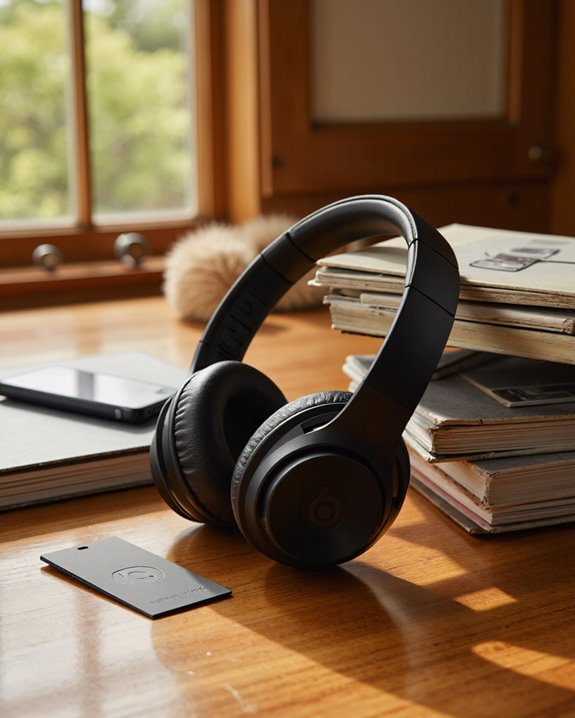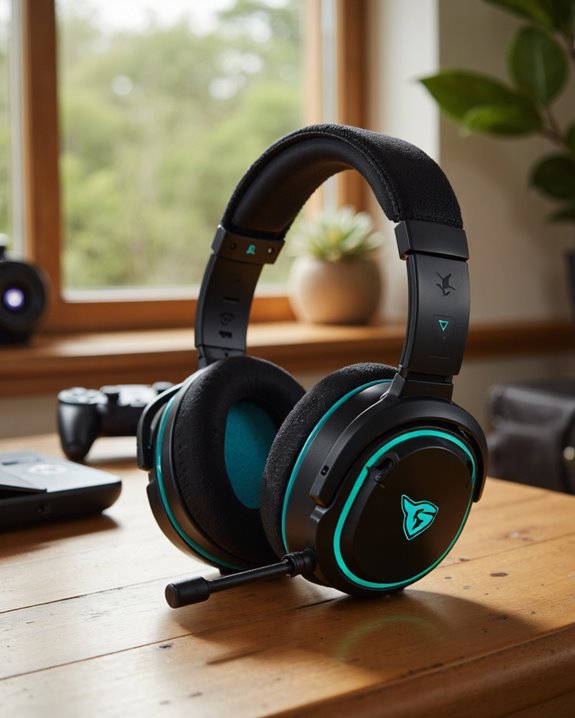As an Amazon Associate, we earn from qualifying purchases. Some links may be affiliate links at no extra cost to you. Although our opinions are based on curated research, we haven't used these products. Articles generated with AI.
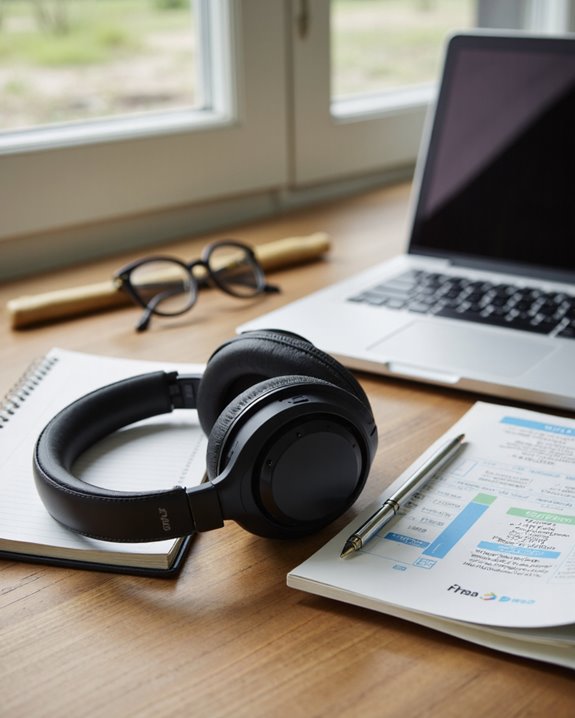
Are Noise Cancelling Headphones FSA-Eligible?
Noise cancelling headphones aren’t automatically FSA-eligible, but we can use FSA funds for them if a healthcare provider issues a Letter of Medical Necessity linking them to a qualifying medical condition—like tinnitus, ADHD, or sensory disorders. The LMN must detail the diagnosis and explain how headphones aid treatment. Without this formal documentation, most FSA plans view them as personal comfort items and deny reimbursement. Understanding eligibility, documentation, and claim strategies is essential to maximize FSA benefits—let’s explore these requirements further.
Key Takeaways
- Noise cancelling headphones are generally not FSA-eligible as they are considered personal comfort items.
- They may be FSA-eligible if prescribed by a healthcare provider for a specific medical condition.
- An FSA claim requires a Letter of Medical Necessity (LMN) detailing the diagnosis and therapeutic benefit.
- Eligible conditions may include tinnitus, hyperacusis, ADHD, anxiety, or certain sleep disorders.
- Approval depends on proper documentation and the specific FSA plan administrator’s policies.
Understanding Flexible Spending Accounts (FSA)
When we’re considering how to make the most of our healthcare dollars, understanding Flexible Spending Accounts (FSAs) is essential. With an FSA, we set aside pre-tax income—up to $2,850 per person for 2022—to pay for eligible items and services that promote health and support treatment of a medical condition. These accounts are established by employers and require us to use the funds within a plan year, though some plans offer limited extensions. Reimbursement from an FSA applies to a defined list of healthcare expenses, such as copayments and prescription medications, but not every product qualifies. Occasionally, to justify an expense related to an account holder’s medical condition, a Letter of Medical Necessity may be required, ensuring the purchase aligns with approved treatment guidelines.
Medical Expense Eligibility Criteria for FSA
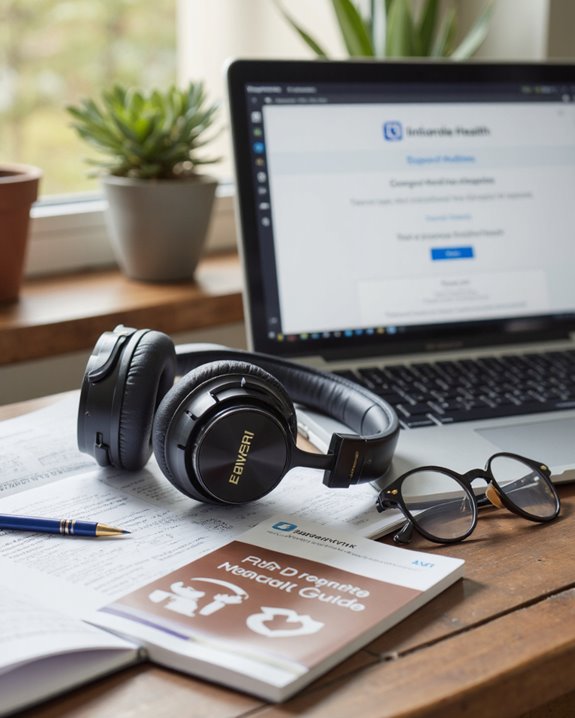
Determining which expenses qualify for FSA reimbursement requires a clear understanding of the eligibility criteria set by federal guidelines and individual plan policies. For an item to be eligible under a flexible spending account, it must be primarily intended to treat or alleviate a medical issue and often requires substantiation from a healthcare provider. This is typically achieved with a Letter of Medical Necessity, which formally documents the medical necessity of a product or service. FSA funds can be used for hearing aids and related accessories, as these are recognized as eligible expenses due to their direct connection to medical conditions. Because noise cancelling headphones are generally regarded as personal items without a defined medical necessity, they’re seldom considered eligible, unless an exception is documented by your plan administrator.
Noise Cancelling Headphones: What Are They?

Noise cancelling headphones represent a significant advancement in audio technology, designed to actively reduce unwanted ambient sounds using sophisticated active noise control systems. By employing built-in microphones, these headphones detect external noise and generate inverse sound waves to cancel them out, offering a quieter listening environment. This active noise control technology can dramatically lower background noise—ideal for settings like airplanes or busy offices. In addition to active noise cancellation, many models incorporate passive noise isolation, relying on ear cup design and materials to block out sound physically. Users can often customize their listening experience with adjustable noise cancellation levels, making these devices adaptable for different environments. For those needing to improve focus and productivity, especially individuals with sensory sensitivities or attention-related conditions, noise cancelling headphones provide targeted benefits. Models like the Upgrade Pro use hybrid ANC technology to achieve superior noise reduction and extended battery life.
Common Medical Conditions Requiring Noise Reduction

Although we often associate noise-canceling headphones with travel or leisure, there’s a compelling medical rationale for their use among individuals with specific auditory sensitivities and neurological conditions. For example, tinnitus sufferers experience persistent ringing that external noise can aggravate—noise reduction through advanced headphones can offer practical relief. Hyperacusis, marked by an abnormal sensitivity to everyday sounds, also makes effective noise-canceling technology essential for comfort and pain prevention. Additionally, those with ADHD may find that minimizing environmental distractions enhances their focus and productivity, as sensory overload frequently disrupts attention. Anxiety disorders often involve heightened reactivity to noise, so reducing auditory stressors can help manage symptoms. Finally, sleep disorders like insomnia may be mitigated by creating quieter environments, supporting improved rest and recovery. Many of these benefits are enhanced by headphones featuring advanced noise cancellation technology, such as those equipped with active noise-canceling and AI-driven noise reduction capabilities.
The Role of a Letter of Medical Necessity
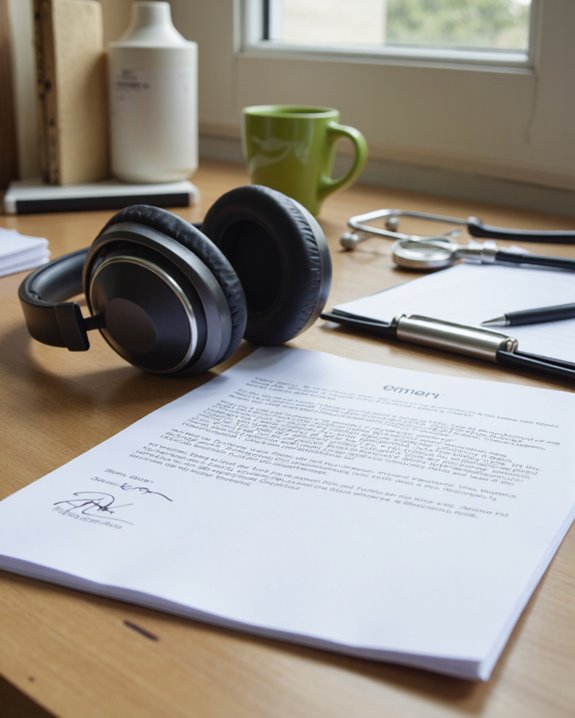
When seeking FSA reimbursement for noise-canceling headphones, an essential step is obtaining a Letter of Medical Necessity (LMN) from your healthcare provider. This document is required for reimbursement and must clearly state the medical condition—such as anxiety, sensory processing disorders, or hearing loss—that justifies the use of these headphones. The LMN should detail how noise-canceling headphones will alleviate the issue, focusing on their therapeutic benefits in managing symptoms. Additionally, it must specify the duration for which the treatment will last, as this impacts how long you’ll be eligible for reimbursement under your FSA. If your need for noise-canceling headphones extends beyond the current plan year, your provider must submit an additional LMN to continue reimbursement eligibility, ensuring ongoing compliance with FSA requirements.
Steps to Obtain FSA Reimbursement for Headphones

Once we have a well-prepared Letter of Medical Necessity (LMN) from our healthcare provider, the next step is to follow the specific process required by our Flexible Spending Account (FSA) administrator to request reimbursement for noise-canceling headphones. We’ll need to guarantee the LMN details our medical condition, specifies the necessity for sound reduction, and includes the recommended duration of use. When submitting our reimbursement claim form, it’s important to attach both the LMN and original purchase receipts for the headphones. The FSA administrator will review these documents to confirm the headphones qualify as eligible items under our plan. We should keep all documentation, as additional verification may be needed. Remember, FSA reimbursement isn’t available through Limited-Purpose or Dependent Care FSAs for this expense.
Comparing Headphones to Other FSA-Eligible Hearing Protection

Since FSA eligibility hinges on specific medical need, it’s important we compare noise cancelling headphones to other hearing protection options—like ear plugs—that are more clearly recognized under FSA guidelines.
Ear plugs are explicitly FSA-eligible when we have a Letter of Medical Necessity (LMN) that identifies the medical condition requiring sound reduction. Their Noise Reduction Rating (NRR) quantifies effectiveness, offering reliable, targeted hearing protection for high-risk environments. In contrast, noise cancelling headphones use electronic technology for broader sound isolation. However, because they’re commonly marketed for recreational use, they’re not automatically FSA-eligible. We’d need an LMN explicitly stating their necessity for treating a medical condition. Ultimately, while both options provide sound reduction, ear plugs are more straightforward for flexible spending account (FSA) reimbursement, making them a preferred choice under most FSA guidelines.
Documentation Needed for FSA Claims
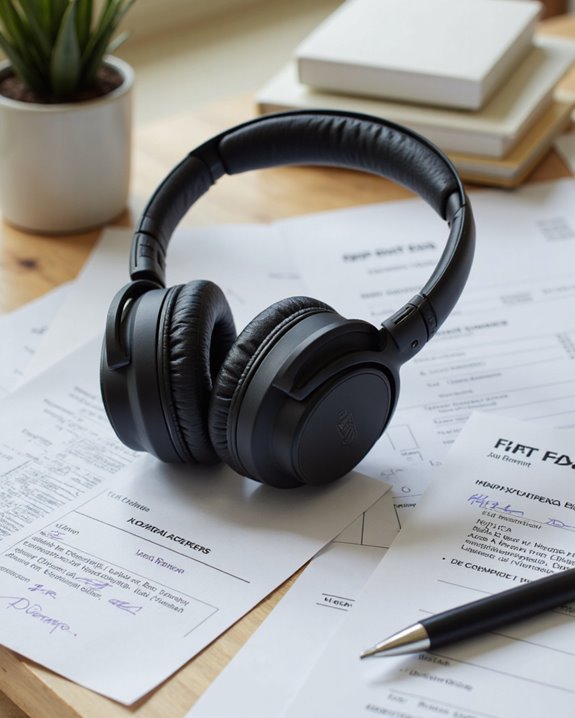
Although noise cancelling headphones aren’t typically FSA-eligible, there’s a path to reimbursement if we can demonstrate a clear medical necessity. First, we need a Letter of Medical Necessity (LMN) from our healthcare provider. This letter must identify the specific medical condition being treated and explain precisely how noise cancelling headphones will alleviate symptoms as part of the treatment plan. The LMN should include details regarding the recommended duration of use, ensuring the documentation matches the treatment timeline. If our provider prescribes headphones for ongoing use extending past the current FSA plan year, we’ll need to secure an updated LMN for continued reimbursement. Proper documentation is essential—without it, FSA-eligible claims for noise cancelling headphones will almost certainly be denied.
Potential Limitations and Exclusions
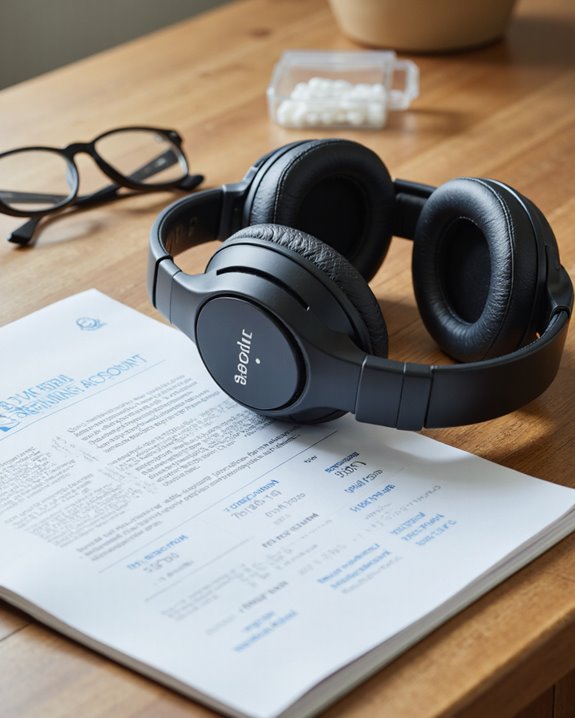
Many FSA participants are surprised to learn that noise cancelling headphones face strict limitations and exclusions when it comes to eligibility. Under most FSA guidelines, these headphones are categorized as personal comfort items, not necessary medical devices, making reimbursement generally ineligible. To qualify for FSA reimbursement, a Letter of Medical Necessity must explicitly connect the headphones to a diagnosed medical condition, including documentation that details the treatment plan and duration. Even then, approval is not guaranteed—eligibility is at the discretion of the benefits provider. Additionally, limited-purpose flexible spending accounts specifically exclude noise cancelling headphones from eligible expenses, regardless of supporting documentation. It’s essential that we comprehend these requirements, as incomplete or insufficient documentation can result in denied claims, despite a legitimate medical need.
Contacting Your FSA Administrator for Clarification
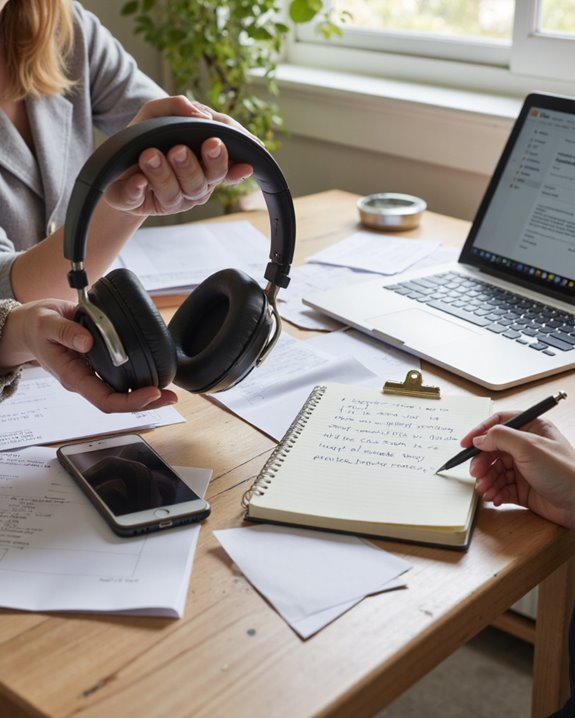
When maneuvering through the complexities of FSA reimbursement, it’s essential that we contact our FSA administrator directly to clarify whether noise cancelling headphones qualify as an eligible expense under our specific plan. FSA administrators are uniquely positioned to confirm if these devices are considered a reimbursable medical expense and to outline the eligibility criteria that apply. We should ask about the process for submitting a claim, including which required forms and receipts will be needed. If a Letter of Medical Necessity is required, we’ll want to understand its format and supporting documentation. Additionally, let’s confirm all deadlines for submitting claims to guarantee compliance with your plan’s requirements. Staying proactive with our FSA administrator helps us navigate the system efficiently and avoid missing important reimbursement opportunities.
Frequently Asked Questions
Are Earplugs Eligible for FSA?
Did you know about 48 million Americans have some degree of hearing loss? We can use our FSA for earplugs if we get a doctor’s note showing earplug benefits like noise reduction, improved sleep quality, and reduced workplace distractions.
Can You Write off Noise Cancelling Headphones?
When we consider writing off noise cancelling headphones, we need to focus on tax deductions for medical expenses. Eligible purchases must offer health benefits like sound therapy, noise reduction, or stress relief, depending on headphone types and documented medical necessity.
Are Sleep Headphones FSA Eligible?
When we consider FSA eligibility for sleep headphones, we’ll need a Letter of Medical Necessity showing they support sleep health, relaxation techniques, improved sleep quality, restful nights, noise reduction, stress relief, sleep disorders, or enhancing your bedtime routine.
Are Hearing Aid Accessories FSA Eligible?
Let’s clear the fog around FSA eligibility together! We can use FSA funds for hearing aid batteries, hearing aid maintenance, audiologist visits, assistive listening, sound amplification devices, cochlear implant accessories, hearing protection devices, and tinnitus relief products.

